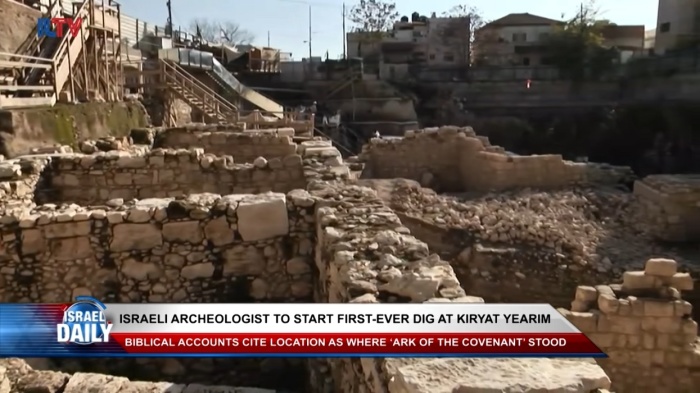Archaeological discovery: Platform found in Israel may have held Ark of the Covenant

Archaeologists in Israel have unearthed a massive man-made platform that could contain clues about the Ark of the Covenant.
Israel Finkelstein, an archaeologist at Tel Aviv University, told The Times of Israel that the eighth century BCE shrine was believed to have held the Ark of the Covenant. The Ark is said in the Bible to contain the two stone tablets of the Ten Commandments given by God to Moses.
The Ark is believed to have been kept at Kiriath-Jearim for 20 years, until it was paraded by King David in Jerusalem.
Unlike other archaeologists working in the region, Finkelstein said he doesn't believe the Ark actually existed. Still, he insists that the recent discovery could lead to information about the political events in biblical times.
“The excavations at Kiriath-Jearim shed light on the strength of Israel (the Northern Kingdom) in the early eighth century, including, possibly, its domination of Judah,” Finkelstein said. “They also illuminate an important theme in the Bible — the Ark and its history.”
The structure researchers discovered, which the Times of Israel described as "game-changing," is an elevated rectangular podium.
The archaeologists say "it can be reconstructed to have been circa 150-110 m in size and covering an area of some 1.65 hectares. Created with typical Iron Age walls, 3-m wide and which still stand 2-m high, it is oriented exactly north-south and east-west."
The excavation team suggests that the goal at the time was to "legitimate Kiriath-Jearim as the ‘new’ shrine of the Ark."
"Accordingly, in the case of a North Kingdom affiliation, the elevated platform was built in order to accommodate an Israelite administration compound, including a temple, aimed at dominating the vassal kingdom of Judah," it adds.
Kiriath-Jearim itself is an important biblical site, with I Chronicles 13, 5-8 detailing the story of King David transporting the Ark to Jerusalem.
“And David went up, and all of Israel, to Baalah, that is, to Kiriath-Jearim, which belonged to Judah, to bring up from thence the ark of God … David and all the Israelites played, celebrating with all their might before God, with songs and with harps, lyres, timbrels, cymbals and trumpets,” reads the passage.
Still, Finkelstein says that he doesn't expect to find physical evidence of the Ark having historically resided at the site.
“I think that the story of the Ark … served the ideology of the Northern Kingdom in the time of Jeroboam II, as well as the actual territorial needs which stemmed from the domination over Judah,” he said.
“I suspect that this shrine of the Ark was part of a United Israel (ruled from Samaria) ideology – the forerunner of the later Judahite United Monarchy concept.”
Other archaeologists searching for clues related to the Ark have said that they have a strong religious faith, such as Scott Stripling of the Associates for Biblical Research.
Stripling, who in 2017 said that his team was working at a dig in Shiloh searching for clues, insisted at the time that the Bible is "very reliable" when it comes to archaeological work.
"We're taking the Bible as a serious historical document," he said, adding "but the evidence is what the evidence is."
More recently, claims that the Ark lies inside a church in Ethiopia have been disputed. The claim apparently stemmed from old accounts by late British scholar and historian Edward Ullendorff, who at one point alleged that he had seen the Ark inside the Church of Our Lady Mary of Zion in Aksum during World War II.
Tudor Parfitt, who was also a professor at the University of London's School of Oriental and African Studies, told Live Science in December that back in 1941 Ullendorff saw what he believed to be a copy, and not the actual Ark.
"What he saw was what you find in any Ethiopian church, which is a model of the Ark of the Covenant," the professor said.
Ullendorff decided to make an impression in Ethiopia that he had seen the real Ark, since he continued working in the country after the war, and did not want to hurt the people’s feelings.




























